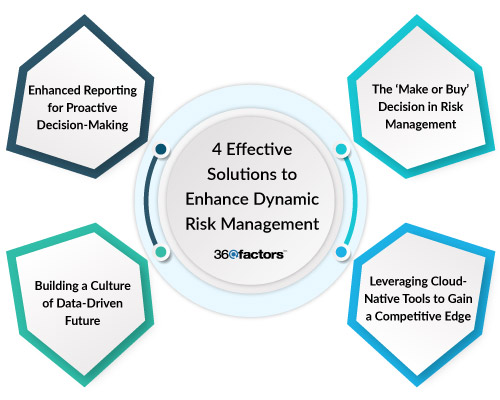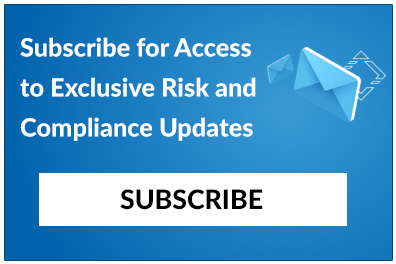Home/ Blog / How Banks Can Enhance Dynamic Risk Management with Smarter Solutions
The banking industry is navigating a complex landscape, struggling with inflationary pressure, economic volatility, rising interest rates, and the growing demand for consumer-centric and customized services. These factors and the rapidly changing regulatory environment are compelling banks to rethink their risk management strategies. Traditional risk infrastructures, built on monolithic, fragmented systems, must adapt to market changes efficiently and are proving costly in the face of new market trends.
Banks must move forward to transform legacy systems into streamlined, modern, and dynamic risk management architectures that allow complete risk visibility and actionable insights. Several organizations are investing in digital transformation to realize this vision and moving beyond manual processes to create scalable, flexible risk management models. With such advanced models, they can empower risk teams and decrease operational costs with reliable and faster tools to enhance analysis and reporting for informed decision-making.
This transformation is about adopting new technology and making a strategic shift that brings IT and other business departments closer, paving the way for data-driven and dynamic risk management approaches. Banks that embrace this new standard and lead with innovation in risk management are well-positioned to seize emerging opportunities. Let’s explore some of the more innovative solutions to enhance dynamic risk management in this blog:
4 Smarter Solutions to Enhance Risk Management

1. The Make or Buy Decision in Risk Management
Banks are currently faced with a crucial decision in risk management: to develop a proprietary system in-house or adopt vendor technology. This ‘make or buy’ decision requires a delicate balance between standardization, efficiency, and the bank’s unique needs. With their standardized frameworks, vendor risk management solutions are fantastic for medium-sized banks looking for excellence without spending extensive internal resources. These solutions streamline risk processes and reduce IT complexity and staffing needs, fulfilling customized requirements. One of the critical advantages of vendors is that they free up resources, allowing banks to focus on core functions without the distraction of managing complex IT systems. Vendor-based dynamic risk management solutions cover various financial and non-financial risk areas, including operational, economic, strategic, and reporting.
Vendor solutions only work well in some situations; banks with specialized business models, such as those focused on corporate finance or structuring complex credit arrangements, may find that proprietary systems better fulfill their needs. Proprietary solutions offer the flexibility for greater risk management, including sophisticated credit risk management customized to improve regulatory compliance and economic exposure.
In today’s rising risk infrastructure costs, many banks may prefer a hybrid approach that includes leveraging vendor solutions for cost-effective standardization in more expansive areas while reserving propriety systems for unique applications. This dynamic risk management strategy helps the bank deal with the complex risk landscape with a balanced approach.
2. Leveraging Cloud-Native Architecture to Gain a Competitive Advantage
Traditional risk management models must be enhanced to meet today’s business needs. Legacy data architecture and IT, which generally involve complex and time-consuming manual methodologies, can make risk calculations take hours if not days. This strategy is time-consuming, prone to human error, challenging to maintain, and expensive.
In comparison, cloud-native architecture offers banks a flexible, fast, and scalable option to revolutionize risk management. Cloud-based risk management software systems take way less time for risk calculations reducing it from hours to minutes, allowing real-time analysis and decision-making that can keep pace with swift market shifts. For instance, essential calculations like market risk assessments, cash flow projections, counterparty risk simulations, and financial instrument evaluation can now be implemented instantly with dynamic risk management solutions. This helps risk managers focus on strategic decisions instead of tedious computations.
The modular nature of cloud-based systems provides further advantages, such as updating or replacing individual program modules independently, allowing for quick testing of innovative ideas without costly infrastructure changes. This flexibility ensures that banks can respond to evolving requirements without delays and maintain cost efficiency. By embracing cloud-native architecture, banks can say goodbye to outdated systems, promote closer collaboration between business functions and IT, and support ongoing innovation. This empowerment allows banks to take control of their risk management strategies and confidently adapt to changing market conditions.
3. Building a Culture of Data-Driven or a Sustainable Future
Dynamic risk management is necessary for the banking sector and requires enduring transformation toward data-driven decision-making. The modern innovation agenda in finance highlights the need for process automation, cloud services, and digital reporting. However, these advancements can only provide real value if they are supported by timely, accurate, and accessible data that can be assessed instantly.
Many banks still rely on fragmented data, which leads to inconsistent and irreconcilable data. This fragmentation is particularly challenging when multiple departments report conflicting metrics for similar risk elements, undermining reporting and decision-making accuracy. Banks now increasingly target a “single point of truth” through a Reporting Data Mart (RDM) to deal with this. This centralized data repository serves all departments, offering a unified and consistent source of risk information that removes the urge for manual adjustments and workarounds.
It ensures consistency, including embedding specific data sets via data lakes, allowing flexible analysis that goes to other departments. This approach should be considered in the comprehensive dynamic risk management program to create a holistic data-driven culture across the company. It improves the accessibility and quality of data for every department. Precise data flow visibility, from initial source to final report, is a priority for risk officers. Data lineage tools and glossaries can provide transparency, enabling risk professionals to trace data origins and understand any changes it undergoes. To fully reap the benefits of a data-driven culture, banks must prioritize adopting successful risk management solutions that enhance clear data traceability, governance, and accountability, allowing more reliable and faster insights into risk.
4. Enhanced Reporting for Faster and Smarter Decision-Making
Traditional risk reporting methods required frequent manual updates. Chief risk officers can use dynamic and automated reporting systems today that support flexible and quick analysis. Banks can streamline data evaluation, for instance, to produce accurate time risk reports with the reporting data mart. Dynamic risk management reporting enables risk teams to respond quickly to market changes and regulatory demands without the need for manual intervention.
Business Intelligence (BI) tools are modernizing the way risk experts create analytical dashboards. These tools provide user-friendly interfaces and enable customization, making data interpretation easy for team members. Additionally, automation is playing a crucial role in transforming reporting processes. Integrating BI components into workflow-based reporting allows banks to automate data gathering, processing, and analysis, reducing the burden on staff.
For instance, one bank reduced its report preparation time by 35% and cut the required team size by more than half by adopting a workflow-based BI system. Banks can focus on generating insights and decision-making with automated, dynamic reporting tools rather than waste time on data preparation. This shift increases operational efficiency and enables more responsive, informed risk management strategies.
Take Your Dynamic Risk Management to the Next Level with Our Cloud-Based Solution
If you want to strengthen your risk management framework and attain the comprehensive benefits of dynamic reporting, implementing Predict360 Enterprise Risk Management software is a strategic step forward. It offers a centralized platform that allows real-time visibility of enterprise risks in a unified dashboard, making it more accessible for managers to detect, evaluate, and mitigate potential risks.
Predict360 ERM software supports risk professionals in making data-driven and informed decisions with real-time monitoring and reporting features to enhance dynamic risk management. Its integration with powerful visualization tools like Tableau BI and Power BI allows banks to analyze risk scenarios comprehensively, aligning insights with organizational objectives. This capability is crucial in today’s fast-paced environment, where responsive, informed decision-making can make a competitive difference.
Request a Demo
Complete the form below and our business team will be in touch to schedule a product demo.
By clicking ‘SUBMIT’ you agree to our Privacy Policy.



